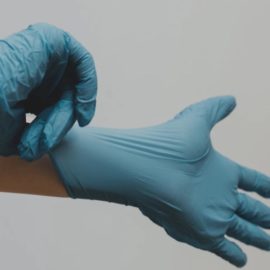

This article is an excerpt from the Shortform book guide to "Made to Stick" by Chip Heath and Dan Heath. Shortform has the world's best summaries and analyses of books you should be reading.
Like this article? Sign up for a free trial here .
What was the blue-eyes brown-eyes exercise? What can it teach us about memory hooks?
School teacher Jane Elliott’s blue-eyes brown-eyes exercise in 1968 taught her students about discrimination. That lesson is still powerful to this day. It also teaches us how to use memory hooks to create a message that sticks with people.
Read more to learn about memory hooks and the blue-eyes brown-eyes exercise.
Memory Hooks Make a Message Stick
In 1968, Iowa elementary-school teacher Jane Elliott created a message with so many memory hooks that it stuck with her students for decades and even changed their lives. She had discussed discrimination with her third graders in the past. But when Martin Luther King, Jr. was assassinated on April 4, 1968, Elliott felt she needed to communicate the significance of his life and death in a way that would be concrete and memorable to children living in an all-white town. Memory hooks are a powerful way to make a message concrete.
She divided her class into two groups: kids with blue eyes and kids with brown eyes. She announced that brown-eyed kids were superior to those with blue eyes and she began treating them that way—they got extra time at recess and other privileges. They sat in the front of the room while blue-eyed kids sat in the back; the groups weren’t allowed to mix. The blue-eyed children had to wear special collars so they could be identified from a distance.
The class atmosphere changed immediately as brown-eyed kids began taunting blue-eyed kids. The next day, Elliott announced she’d been wrong: The blue-eyed kids actually were superior to the brown-eyed kids. The same superior-inferior dynamic developed again when roles were reversed. It began to affect academic performance—the supposedly inferior children took longer to complete assignments. One student in the “inferior” group said later that they did poorly because they couldn’t stop thinking about the collars they were wearing.
The blue-eyes brown-eyes exercise had a lasting impact: research studies done ten and twenty years later showed that the students who participated were significantly less prejudiced than those who hadn’t. At a 15-year reunion videoed by PBS, the students were still talking about how profound the experience had been and how it continued to guide their thinking and behavior.
Elliott had put numerous memory hooks into her lesson: the feeling of friends turning on you, being marked as inferior by wearing a collar, and feelings of elation, despair, and self-doubt. The students never forgot it.
You, too, can use memory hooks to powerfully communicate your message and make it stick.

———End of Preview———
Like what you just read? Read the rest of the world's best book summary and analysis of Chip Heath and Dan Heath's "Made to Stick" at Shortform .
Here's what you'll find in our full Made to Stick summary :
- What makes some messages “stick” while others go unremembered
- The six criteria for shaping your message so it resonates
- Why many companies are blinded by “the curse of knowledge”






